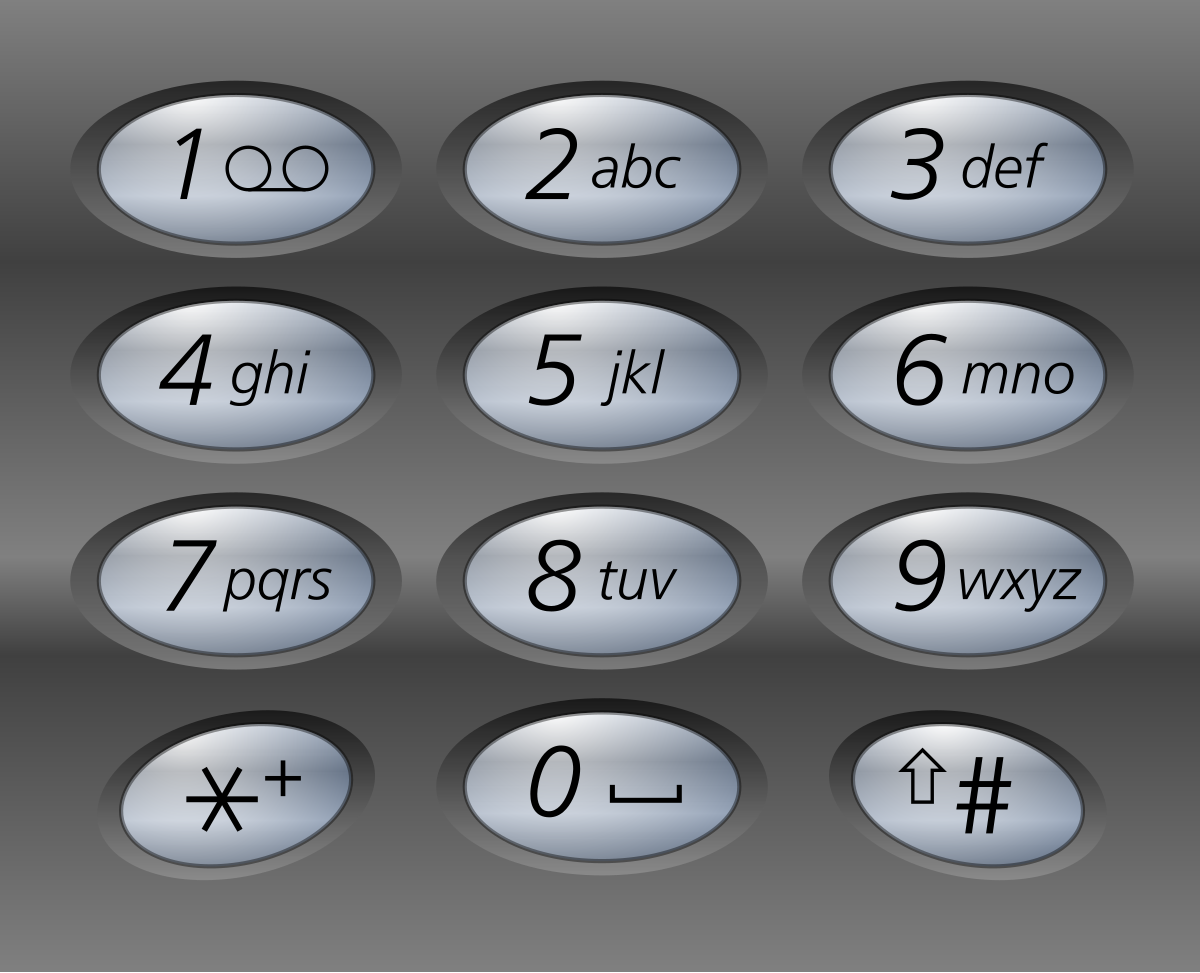10 Jan 17. Letter Combinations of a Phone Number
Given a string containing digits from 2-9 inclusive, return all possible letter combinations that the number could represent. Return the answer in any order.
A mapping of digits to letters (just like on the telephone buttons) is given below. Note that 1 does not map to any letters.

Example 1:
Input: digits = "23" Output: ["ad","ae","af","bd","be","bf","cd","ce","cf"]
Example 2:
Input: digits = "" Output: []
Example 3:
Input: digits = "2" Output: ["a","b","c"]
Constraints:
0 <= digits.length <= 4digits[i]is a digit in the range['2', '9'].
简介
题目链接 Leetcode 17. Letter Combinations of a Phone Number
作为一道经典的Medium难度的问题,本题的考点在于回溯法(Backtracking),递归(Recursion),深度搜索(DFS)。但是可能你没有想到,这道题还可以用普通迭代(Iteration,更直接地说for/while循环)的方法来解。下面让我们一起来看看这两种解法是如何实现的吧。
注意:文章中一切注解皆为Python代码
理解题目
题目非常简单。在传统电话按键上,数字键下面都对应着一些字母,数字按键2到9涵盖了所有26个英文字母。题目的输入参数是一个仅包含数字2到9的字符串,需要我们输出这些数字各自对应的字母能构成的所有组合。
最简单直观的解法就是把这题看作可包含重复字符,可变长度的字符串排列(permutation),可以想象成是LeetCode 46. Permutations的一种变体。
要我说解法并不复杂,每一次递归中,逐个加入相对应的字母到cur中;将字符串长度+1,直到长度等于字符串长度时,添加入结果(ans)中。最终最差时间复杂度为O(4^N),因为最终长度为N,每个位置都有4个字母可以选(7和9对应四个字母,其他对应三个字母)。
class Solution:
def letterCombinations(self, digits):
table = {
'2':"abc", '3':"def", '4':"ghi",
'5':"jkl", '6':"mno", '7':"pqrs",
'8':"tuv", '9':"wxyz"
}
def dfs(ans, cur, idx):
nonlocal digits
if idx == len(digits):
ans.append(cur)
else:
for letter in table[digits[idx]]:
dfs(ans, cur+letter, idx+1)
return ans
return dfs([], "", 0) if digits else []
- 1
- 2
- 3
- 4
- 5
- 6
- 7
- 8
- 9
- 10
- 11
- 12
- 13
- 14
- 15
- 16
迭代解法
迭代解法看似很复杂,但其实真的不难理解。
时间复杂度为O(N* 4^N),其中N是为了遍历每一个数字,ans最终会有4^N个,因此时间复杂度稍微高一些。不过考虑到这题的输入尺寸是
0 <= digits.length <= 4
因此Python程序运行一遍其实也只需要几十毫秒。
迭代解法过程如下:
- 先取第一个数字初始化一下结果列表
ans; - 初始化结束后,会开始遍历剩余的数字
- 对于接下来的每个数字
digit,把ans中的每个可能结果和这个数字对应的字母们table[digit]做笛卡尔乘积(Cartesian product),会得到一个新的ans - 不断循环这个过程,直到所有数字被遍历过,最终返回
ans
class Solution:
def letterCombinations(self, digits):
if not digits: return []
table = {
'2':"abc", '3':"def", '4':"ghi",
'5':"jkl", '6':"mno", '7':"pqrs",
'8':"tuv", '9':"wxyz"
}
ans = list(table[digits[0]])
for digit in digits[1:]:
ans = [exist + c for exist in ans for c in table[digit]] # 这一句等同于下面五句
# tmp = []
# for exist in ans:
# for c in table[digit]:
# tmp.append(exist + c)
# ans = tmp
return ans
- 1
- 2
- 3
- 4
- 5
- 6
- 7
- 8
- 9
- 10
- 11
- 12
- 13
- 14
- 15
- 16
- 17
- 18
解题后的思考
这题不管是用递归还是迭代,基本都属于一种暴力解决的状态。这和题目要求是有关系的,因为我们必须输出所有可能的组合。一提到【找出所有组合】,更多的想到的是【递归】。有趣的地方在于,一旦我们先入为主的用递归解决了问题,就很难想象到这题还可以用迭代的方式实现;毕竟【迭代】和【找出所有组合】这种需求经常不会直接联系起来。
我想值得学习的就是,尽管迭代这种方式更加符合直觉,更好理解,但用力去了解把递归化为迭代的方式,也是一份十足的收获。


No Comments